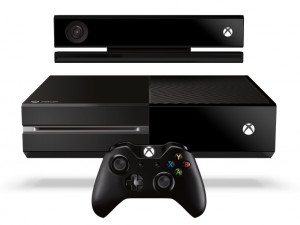In the Xbox One and Kinect divorce, everyone stands to lose something

As you probably noticed, earlier this week Microsoft announced that the Xbox One would be made available without Kinect, instead of forcing the motion sensor on consumers as a compulsory part of the Xbox package. This was a move analysts predicted would happen next year, but it's happening now.
So yes, cue much cheering and cries of "finally" and general applause for a victory for consumer choice. And yes, this is a good thing in terms of consumer choice -- no one would doubt that. But amidst all the buzz, fireworks and party poppers going off, many folks seem to have overlooked the fact that there are downsides to this move. And it's these negative aspects I'm going to look at here.
First off, let's deal with the notion that Microsoft is stepping up for consumer choice -- the line Redmond's PR hawks have spun out. Microsoft is stepping up for no one but Microsoft's bean counters -- evidently the sales figures lagging behind the PS4 has now got to a worrying enough stage where more drastic action has to be taken. Hence the Kinect unbundling to allow a cheaper price point to better compete (more on that point shortly).
Microsoft tried to force the Kinect on everyone by default, decided this policy isn't going to fly after all, and has now U-turned (once again). That's the second negative: Early adopters of the console -- the most loyal fans, the biggest core followers of Xbox -- they didn't get any choice bestowed upon them, and may rightly feel aggrieved.
Particularly considering downside number three -- namely, that the unique selling point of the Xbox One has now evaporated, and the initial vision of the console has been watered down. The media-focused alternative to the PlayStation 4 angle is weakened, a point of differentiation which is something of a shame to lose. Now the consoles are even more similar, save for exclusive games and some extra graphical horsepower for the PS4. Moreover, this isn't just a media issue. In terms of gaming, the fact that every Xbox One came with Kinect meant that down the line, developers of big name games might have chucked in some cool extra voice or motion-based features which helped bring a game to life. You know, neat touches like hand gestures to control AI soldiers in your squad, and many other innovative voice/motion extras which creative devs could potentially have dreamed up. Also, what about the biometric side of Kinect, the heart rate estimation gubbins -- maybe that could have spiced up horror games, for example...
I expected to see some smart new spins on the Kinect as a supplementary controller to the Xbox gamepad, but of course now -- well, not everyone will have a Kinect. So just as was the case with the Xbox 360, in general developers won't bother with it -- whereas they may well have done with a 100 percent Kinect-equipped user base.
Another issue is the price decrease here in the UK. In the US, looking at the pricing on Amazon, the Xbox One with Kinect is currently (as I write) $490, with the new Kinect-less Xbox (released on 9 June) weighing in at $399 for pre-orders. That's almost a full $100 less -- a real saving. In the UK, the Xbox One with Kinect is currently £379 on Amazon, and the new Kinect-less Xbox is priced at £349 (to sit equal with the PS4). That's a whopping £30 less. What's wrong with this picture, folks?
Okay, so £349 for the Kinect-less Xbox One is the recommended price, and come launch (or just after), Amazon may dip that down further -- but in all honesty, I can't see it going down that much. (Equally, it may well dip in the States, too). I've a feeling it might even stick at that level. And if it drops to, say, £329, you're still only gaining £50 from losing Kinect -- which is certainly more worthwhile but still not exactly the Earth (I paid £120 for my original Kinect with the Xbox 360, back in the heady early days of motion control).
Don't get me wrong, I'm not saying that the obvious positives -- the consumer choice, and ability to make some savings (an appreciable amount, let's hope) -- don't outweigh the negatives. Just that there are negatives, particularly when you look at the relative pricing in the UK as it stands right now. And I've one final downside to leave you with -- Microsoft crying wolf:
The Kinect is a fundamental part of the platform! And always will be!
The Kinect is an integral part of Xbox One!
Kinect? Yeah we're making that optional.
When it comes to the next-gen Xbox, Redmond might find a lot more people not believing in its vision; in the way it lays things out for the platform. It might find a lot of folks standing on the sidelines and not committing at launch, waiting for all the aspects they're not sure about to inevitably bend with the winds of the sales figures.
Published under license from ITProPortal.com, a Net Communities Ltd Publication. All rights reserved.
